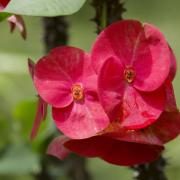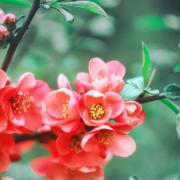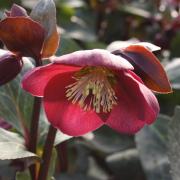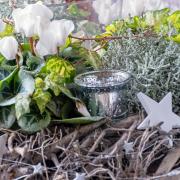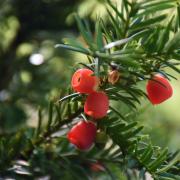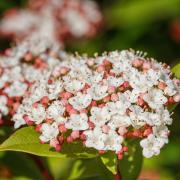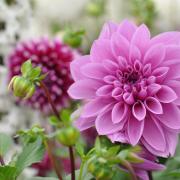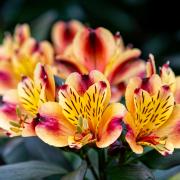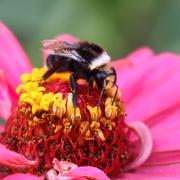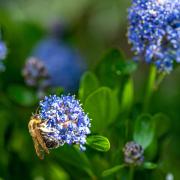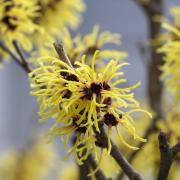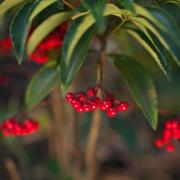Join David Chapman as he moves from riverside to farmland through a remarkable Somerset songbird experience along the River Parrett.
David Chapman enjoys a Somerset songbird experience along the River Parrett
Last summer I went for a walk across Pawlett Hams and along the banks of the River Parrett. As I walked out onto the more open land I passed from woodland, along hedgerow and beside reed-fringed ditches and was struck by the range of birds that I heard along the way.
The first key to successfully identifying birds comes into play before the first bird is seen or even heard, and that is habitat. Many birds are quite specific as to the type of habitat they require; for instance, it is unlikely that you will see a reed warbler in a forest or a woodpecker in an arable field. Of course these are obvious examples but the more we get to understand birds, and other wildlife, the more we can begin to anticipate what we might find in a given location.
The second key to identifying birds, particularly the warblers which were going to entertain me on this walk, is to know their songs. There is no easy way to learn bird song; you can try listening to a CD of bird songs if you like but there is no substitute for getting out there and listening to them in the flesh. Guided walks are a good idea because there is help at hand but it isn't possible to learn them all at once; it takes time and patience but it can certainly be done!Beginning my walk along the White House Rhyne, the first warbler I encountered was a chiffchaff. I found this bird in the trees near the road and this one is probably the easiest warbler to identify by its call. In fact, it is far easier to identify by song than by sight as the song is so distinctive that the chiffchaff was named after it. The song always consists of these two high-pitched notes: 'chiff-chiff-chiff... chaff'.
In appearance the chiffchaff is confusingly similar to the willow warbler, but fortunately the willow warbler has a very different song based on attractive fluty notes. The only easily quantifiable physical difference between the two is that the chiffchaff has dark, almost black, legs whilst those of the willow warbler are brown. Not easy to see when the bird is in the top of a tree, though. Both birds are brown above and cream below, sometimes with a yellowish wash to their plumage, and you may note the pale supercilium (stripe over the eye), which often stands out.
The trees of the roadside soon became bushes along the track and the sound of the chiffchaff was replaced by a bird often associated with hedgerows, the common whitethroat. This is another warbler but one with an obvious physical attribute after which it was named. Compared to the chiffchaff this is a larger bird with a longer tail and one that tends to perch on top of bushes to perform. Its song is scratchy and not particularly attractive, though it does make more of an effort when it occasionally flies into the air to parachute down to its perch again; all this is an attempt to establish a territory and woo a female.
Both male and female have a pale throat, though the male's is whiter. He has a grey head, whilst hers is brown, but apart from that the two are similar, with an attractive rusty-brown back. When the whitethroat first arrives back from Africa in the spring the males are quite vocal, regularly sitting on top of bushes to sing, but during the summer they become very shy and retiring. In late summer they will creep about at the bottom of hedgerows and this is why they were once known as 'nettle-creepers'.
As I progressed out onto the flatter land of the River Parrett's flood plain the bushes alongside the track became thinner and gaps opened up. The gaps were filled to some extent by reeds growing in the ditches which separated and drained the fields. Here another warbler was singing - again, one which struggles to produce anything harmonious; in fact, the reed warbler is not even as tuneful as the melodically challenged whitethroat.
The 'song' of the reed warbler consists only of one or two notes which are repeated quickly and monotonously. The overall effect is something like a slow, mechanical grasshopper: 'chir.rer.rer.rer' occasionally broken by a higher-pitched 'chiree'.
There is something special, though, about watching a reed warbler nimbly clinging to a reed as it slowly makes its way up the stem, pausing for long periods to make its noise before hopping slightly higher. Its colour matches that of old dead reed stems and its plumage is fairly plain, but the fact that this bird is such a specialist of this wonderful environment makes it a joy to watch.Further out onto the flat land the bushes become even more thinly spread but the bird song never ceases. In fact, here is the most joyous of all the bird songs encountered so far. The rough pasture is a perfect home to numerous skylarks. These birds have evolved to cope without trees or other perches from which to sing, instead they sing from the sky; indeed, their name says a lot about the skylark.Stand still and listen. The air can be full of their song and yet they are almost invisible to the eye. A tiny black dot might be all we see of a hovering skylark but their song carries far and wide. Gradually the lark might drop to the ground; watch as it runs along towards its nest hoping that it won't be spotted by predators. Once it is there and sitting tight it disappears once more, but this time through its near-perfect camouflage.
Looking at the photos of birds in this article it is clear that those with the most interesting and audible songs also tend to be the plainest in appearance. This makes sense when you think about it; colourful plumage is a mechanism which some male birds use to attract a mate but if they have a memorable song there is no need to be colourful as well.
I enjoyed my walk beside the Parrett. There is a lot more to see here: the little egrets and shelducks on the river and the brown hares which ran across the track in front of me feature amongst my other memories, but it was the birds and their song which made the most lasting impression.



